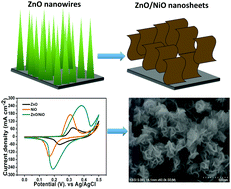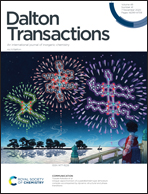A unique core–shell structured ZnO/NiO heterojunction to improve the performance of supercapacitors produced using a chemical bath deposition approach†
Abstract
The integration of metal oxide composite nanostructures has attracted great attention in supercapacitor (SC) applications. Herein, we fabricated a series of metal oxide composite nanostructures, including ZnO nanowires, NiO nanosheets, ZnO/CuO nanowire arrays, ZnO/FeO nanocrystals, ZnO/NiO nanosheets and ZnO/PbO nanotubes, via a simple and cost-effective chemical bath deposition (CBD) method. The electrochemical properties of the produced SCs were examined by performing cyclic voltammetry (CV), galvanostatic charge–discharge (GCD) analysis, and electrochemical impedance spectroscopy (EIS). Of the different metal oxides and metal oxide composites tested, the unique surface morphology of the ZnO/NiO nanosheets most effectively increased the electron transfer rate and electrical conductivity, which resulted in improved energy storage properties. The binder-free ZnO/NiO electrode delivered a high specific capacitance/capacity of 1248 F g−1 (599 mA h g−1) at 8 mA cm−2 and long-term cycling stability over the course of 3000 cycles with a capacity retention of 79%. These results suggested a superiority in performance of the ZnO/NiO nanosheets relative to the nanowires, nanowire arrays, nanocrystals, and nanotubes. Thus, the present work has provided an opportunity to fabricate new metal oxide composite nanostructures with high-performance energy storage devices.



 Please wait while we load your content...
Please wait while we load your content...